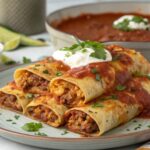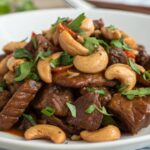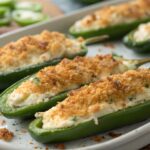Let’s face it, we all crave pasta. It’s that one guilty pleasure we’ve been told to avoid when we’re on a diet, particularly a low-carb, ketogenic one. But Shirataki Noodles Keto Recipes have almost zero carbs and can satisfy your pasta cravings while keeping you within your keto boundaries. That’s right, welcome to the wonderful world of Shirataki noodles!

Embracing Shirataki Noodles
Originating from Japan, Shirataki noodles are made from the konjac yam and are also known as “miracle noodles” due to their low-carb, low-calorie nature. They are a great pasta alternative for people on a keto diet, not only because of their keto-friendly macros but also because they’re highly versatile, pairing well with a multitude of flavors.
- Shirataki noodles are low-carb, high-fiber noodles that are perfect for keto diets
- They can be used in a variety of dishes, such as stir-fries, soups, salads, and pasta dishes
- Shirataki noodles can be paired with keto-friendly ingredients such as vegetables, meats, and healthy fats
- Some popular shirataki noodles keto recipes include keto ramen, shirataki noodle salad, keto pad thai, and shirataki noodle stir-fry
- Shirataki noodles are a great way to add variety to your keto diet while still staying within your carb limits.
So, if you’re on the keto diet and missing your spaghetti nights, or if you’re just curious to try something new, let’s dive into some easy, delicious Shirataki noodle keto recipes.
1. Shirataki Noodle Pad Thai
Let’s start with a classic Asian dish – Pad Thai. This Shirataki Noodle Pad Thai recipe combines the savory, sweet, and sour flavors of traditional Pad Thai, sans the carbs. All you need are Shirataki noodles, a protein of your choice (chicken, shrimp, or tofu), eggs, and a variety of vegetables, along with Pad Thai sauce ingredients.
2. Shirataki Noodle Alfredo
Yes, you can enjoy creamy Alfredo sauce even on a keto diet. This Shirataki Noodle Alfredo recipe is rich and creamy, thanks to the heavy cream and Parmesan cheese, yet surprisingly low in carbs. Simply replace traditional pasta with Shirataki noodles, and voila!
3. Shirataki Noodle Stir Fry
Stir-fry is an excellent way to pack a bunch of vegetables and protein into one dish. This Shirataki Noodle Stir Fry recipe can be as versatile as you want. Choose your favorite protein, colorful veggies, and a simple soy-based sauce, and you’re good to go.
4. Shirataki Noodles Keto Recipes Peanut Butter
Rinse and drain two 200-gram packages of shirataki noodles, then dry fry them in a non-stick pan over medium heat for 10 minutes. Meanwhile, mix 2 tablespoons each of peanut butter, soy sauce, and sesame oil with 1 tablespoon of rice vinegar, 1 minced garlic clove, 1 teaspoon of grated ginger, and 1/2 teaspoon of red pepper flakes. Cook your protein of choice separately. When the noodles are ready, stir in the sauce, cook for another 2-3 minutes, then add the cooked protein. Serve topped with chopped green onions, fresh cilantro, chopped roasted peanuts, and a side of lime wedges.
| Aspect | Shirataki Noodles Keto Recipes |
|---|---|
| Recipe Varieties | Shirataki Noodle Pad Thai, Shirataki Noodle Alfredo, Shirataki Noodle Stir Fry |
| Prep Time | 10-15 minutes |
| Cook Time | 15-20 minutes |
| Total Time | 25-35 minutes |
| Servings | Varies based on recipe |
| Main Ingredients | Shirataki noodles, Protein (chicken, shrimp, tofu, etc.), Vegetables, Sauces/seasonings |
| Calories | Varies based on recipe, generally low calorie |
| Net Carbs | Approx. 0-1g per serving |
| Protein | Varies based on recipe |
| Method | Stir Fry, Boil |
| Diet Type | Keto, Low-carb |
| Course | Main Course |
| Cuisine | Varies (Thai, Italian, etc.) |
| Ease of Making | Easy |
| Ideal For | Any meal, Meal prep |
Also Read: Mastering the Art of Your Keto Stir Fry Sauce Recipe
How to Cook Shirataki Noodles Properly

To get the most out of Shirataki noodles and to enjoy their unique texture, there are a few preparation steps to follow:
Rinse thoroughly: Shirataki noodles come packed in a liquid that has a distinct smell. Rinse them under cold water for a couple of minutes to remove the smell.
Boil: Next, boil them for about 3 minutes. This will help to remove any remaining taste from the liquid they were packed in.
Dry roast: Finally, dry roast the noodles in a non-stick pan until most of the water has evaporated. This step is crucial to giving the noodles a more pasta-like texture.
Wrap Up: Satisfy Your Keto Cravings with Shirataki Noodles

And that’s a wrap on Shirataki noodles! Whether you’re a long-time keto enthusiast or a newbie to the diet, incorporating Shirataki noodles into your meals can open up a whole new world of culinary possibilities, while staying within your dietary boundaries.
So, next time you feel that pasta craving creeping in, reach out for a pack of Shirataki noodles and get cooking. Here’s to guilt-free pasta nights and continuing on your journey to healthier eating! Stay tuned for more keto-friendly tips and recipes. Until then, happy cooking and happier eating!
FAQs
Why are Shirataki noodles suitable for a keto diet?
Shirataki noodles are nearly zero calories and zero carbs, making them ideal for the ketogenic diet. They also have a high fiber content, which aids in digestion and can help you feel full.
What do Shirataki noodles taste like?
Shirataki noodles have a neutral taste, which makes them versatile in cooking as they absorb the flavors of the dish they’re added to. However, they have a unique, slightly rubbery texture which is different from regular pasta.
Can I use Shirataki noodles in any pasta dish?
Yes, Shirataki noodles are a versatile ingredient that can replace traditional pasta in a variety of dishes, from Italian to Asian cuisines.
Are Shirataki noodles gluten-free?
Yes, Shirataki noodles are naturally gluten-free, making them a good choice for those with celiac disease or a sensitivity to gluten.
How should I store leftover Shirataki noodles?
Unused Shirataki noodles can be stored in the refrigerator in water, which should be changed every couple of days. Cooked Shirataki noodles can be stored in the refrigerator in an airtight container, and are best used within a few days.
Can you boil shirataki noodles?
Yes, you can boil shirataki noodles. In fact, boiling is a common way to cook them.
Can you eat shirataki everyday?
Yes, you can eat shirataki noodles every day, but it’s important to do so in moderation. Shirataki noodles are made from konjac, a type of fiber that can cause digestive issues for some people, such as bloating, gas, and diarrhea.





Leave a Reply